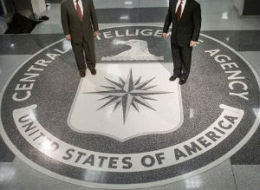 In the U.S. there are more than twelve hundred government intelligence agencies and more than nineteen hundred private intelligence agencies at ten thousand locations across the country. Keeping secrets is an industry.
In the U.S. there are more than twelve hundred government intelligence agencies and more than nineteen hundred private intelligence agencies at ten thousand locations across the country. Keeping secrets is an industry. From the Associated Press:
Washington — Since the terror attacks of Sept. 11, top-secret intelligence gathering by the government has grown so unwieldy and expensive that no one really knows what it cost and how many people are involved, The Washington Post reported Monday.
A two-year investigation by the newspaper uncovered what it termed a "Top Secret America" that's mostly hidden from public view and largely lacking in oversight.
In its first installment of a series of reports, the Post said there are now more than 1,200 government organizations and more than 1,900 private companies working on counterterrorism, homeland security and intelligence in some 10,000 locations across the U.S.
Some 854,000 people – or nearly 1 1/2 times the number of people who live in Washington – have top-secret security clearance, the paper said.
Col. Dave Lapan, a Pentagon spokesman, said Monday the issue of redundancy within the intelligence community is a "well known" problem.
"We've been fighting two wars since 9-11 and a lot of that growth in the intelligence community has come as a result of needed increases in intelligence collection and those types of activities to support two wars," Lapan said.
Defense Secretary Robert Gates previously had ordered the services and defense agencies to find cost savings in the years to come. Lapan said the military's intelligence programs, including its reliance on contractors, was expected to be part of that sweeping review.
Gates told the Post that he doesn't believe the massive bureaucracy of government and private intelligence has grown too large to manage, but that it is sometimes hard to get precise information.
"Nine years after 9/11, it makes sense to sort of take a look at this and say, 'OK, we've built tremendous capability, but do we have more than we need?" he said.
The head of the CIA, Leon Panetta, said he knows that with the growing budget deficits the level of spending on intelligence will likely be reduced and he's at work on a five-year plan for the agency.
The White House had been anticipating the Post report and said before it was published that the Obama administration came into office aware of the problems and is trying to fix them.
The administration also released a memo from the Office of the Director of National Intelligence listing what it called eight "myths" and intended as a point-by-point answer to the charges the Post series was expected to raise.
Among them was that contractors represent the bulk of the intelligence work force. The memo put the number at 28 percent, or less than a third.
The memo said that 70 percent of the intelligence budget is spent on "contracts, not contractors."
"Those contracts cover major acquisitions such as satellites and computer systems, as well as commercial activities such as rent, food service, and facilities maintenance and security," the memo said.
The Post said its investigation also found that:
_In the area around Washington, 33 building complexes – totaling some 17 million square feet of space – for top-secret intelligence work are under construction or have been built since 9/11.
_Many intelligence agencies are doing the same work, wasting money and resources on redundancy.
_So many intelligence reports are published each year that many are routinely ignored.
"There has been so much growth since 9/11 that getting your arms around that – not just for the DNI, but for any individual, for the director of the CIA, for the secretary of defense – is a challenge," Gates told the Post.
No comments:
Post a Comment
Note: Only a member of this blog may post a comment.